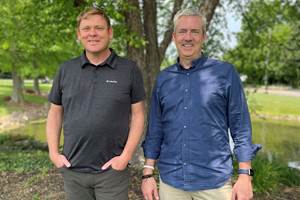Startup struggles
A week before Adam Aircraft made the somewhat surprising announcement that it had run out of cash and couldn’t find anyone to lend it money, I found myself on the phone with one of the company’s composites design engineers. We were discussing trends in composites design for aerospace, aerospace design challenges, and
A week before Adam Aircraft made the somewhat surprising announcement that it had run out of cash and couldn’t find anyone to lend it money, I found myself on the phone with one of the company’s composites design engineers. We were discussing trends in composites design for aerospace, aerospace design challenges, and the future of composites use in aviation structures. Just a couple weeks before this discussion, Adam Aircraft had announced layoffs at its facilities in Colorado and Utah, citing cash-flow problems, so as I spoke with the designer, I knew that the company was struggling to make ends meet. At one point, he commented that there were unique challenges involved in securing Federal Aviation Admin. (FAA) certifcation for composites-intensive aircraft like Adam’s, because they are, materially, such a departure from traditional aircraft construction. He noted that the FAA was being much more careful and, by extension, taking much longer to assess, inspect and certify Adam’s A700 jet. Wondering if this observation was grounded in frustration, given Adam’s cash shortfall, I asked him if the company didn’t, in some way, blame the FAA for the fact that Adam hadn’t yet got its craft to market. “No,” he said. “The FAA has to be careful — and it should be careful. We just happen to be one of the first to go through this process, and it’s going to take a while.”
In hindsight, there was a sad forboding in these comments — it seems like a company that so aggressively pursued composites use in aircraft almost deserves a better chance to see the product come to market. Alas, at press time, Adam’s employees were being pursued by the likes of Bombardier and Embraer, the company had filed for Chapter 7 bankruptcy, and trustee Jeffrey Weinman had begun the process of liquidating Adam’s assets, valued at $50 million to $100 million. Still, there is a glimmer of hope for the Adam product. Weinman told The Denver Post that there “is an enormous amount of interest among many people who would actually like to continue the business.”
Adam’s struggles, whatever the outcome, make clear that despite the benefits composites can provide the aerospace industry, the migration away from metals brings pervasive changes to an aircraft that impact it throughout its lifecycle. Just as a designer who’s used to working with metals can’t apply the same discipline to composites, a certifying authority accustomed to signing off on aluminum structures must reconsider its approach when it comes to assessing a composites-intensive structure. While it’s not fair to say that the FAA shoulders the blame for the company’s demise, its equally unfair that that a trailblazer like Adam Aircraft should suffer for being one of the first out of the gate with planes that so heavily employ composites.
The truest test of aircraft composites and the FAA’s willingness to certify their use will come this summer as Boeing’s 787 is put through its paces. While we’re confident that the Dreamliner will pass muster, it will be a precedent-setting process that heralds a significant milestone in aviation design and construction. Adam Aircraft should be sharing the stage, taking a well-deserved bow. We’ll continue to hope that the Adam A500 and A700 are resurrected and brought to fruition.
Related Content
The (not exactly) new guy at CW
Former CW writer and editor Scott Francis rejoins the brand as editor-in-chief as Jeff Sloan assumes the role of publisher.
Read MoreLooking at composites through the lens of U.S. history
When you’re a tourist with a background in writing for manufacturing it’s impossible not to notice all of the ways in which composites have resulted in significant milestones in the U.S. — historically and in the present.
Read MoreUp, not out: The next chapter of CompositesWorld
I have been editor-in-chief of CompositesWorld for 17 years, which translates into a lot of editorials. This will be my last as I become publisher of CW. We welcome Scott Francis back to the brand to take my place.
Read MoreRemembering Don Adams
When one thinks of composites test methods, one thinks of Don Adams. Don passed away at the end of 2022. We remember him here.
Read MoreRead Next
“Structured air” TPS safeguards composite structures
Powered by an 85% air/15% pure polyimide aerogel, Blueshift’s novel material system protects structures during transient thermal events from -200°C to beyond 2400°C for rockets, battery boxes and more.
Read MoreDeveloping bonded composite repair for ships, offshore units
Bureau Veritas and industry partners issue guidelines and pave the way for certification via StrengthBond Offshore project.
Read MoreVIDEO: High-volume processing for fiberglass components
Cannon Ergos, a company specializing in high-ton presses and equipment for composites fabrication and plastics processing, displayed automotive and industrial components at CAMX 2024.
Read More










.jpg;maxWidth=300;quality=90)








